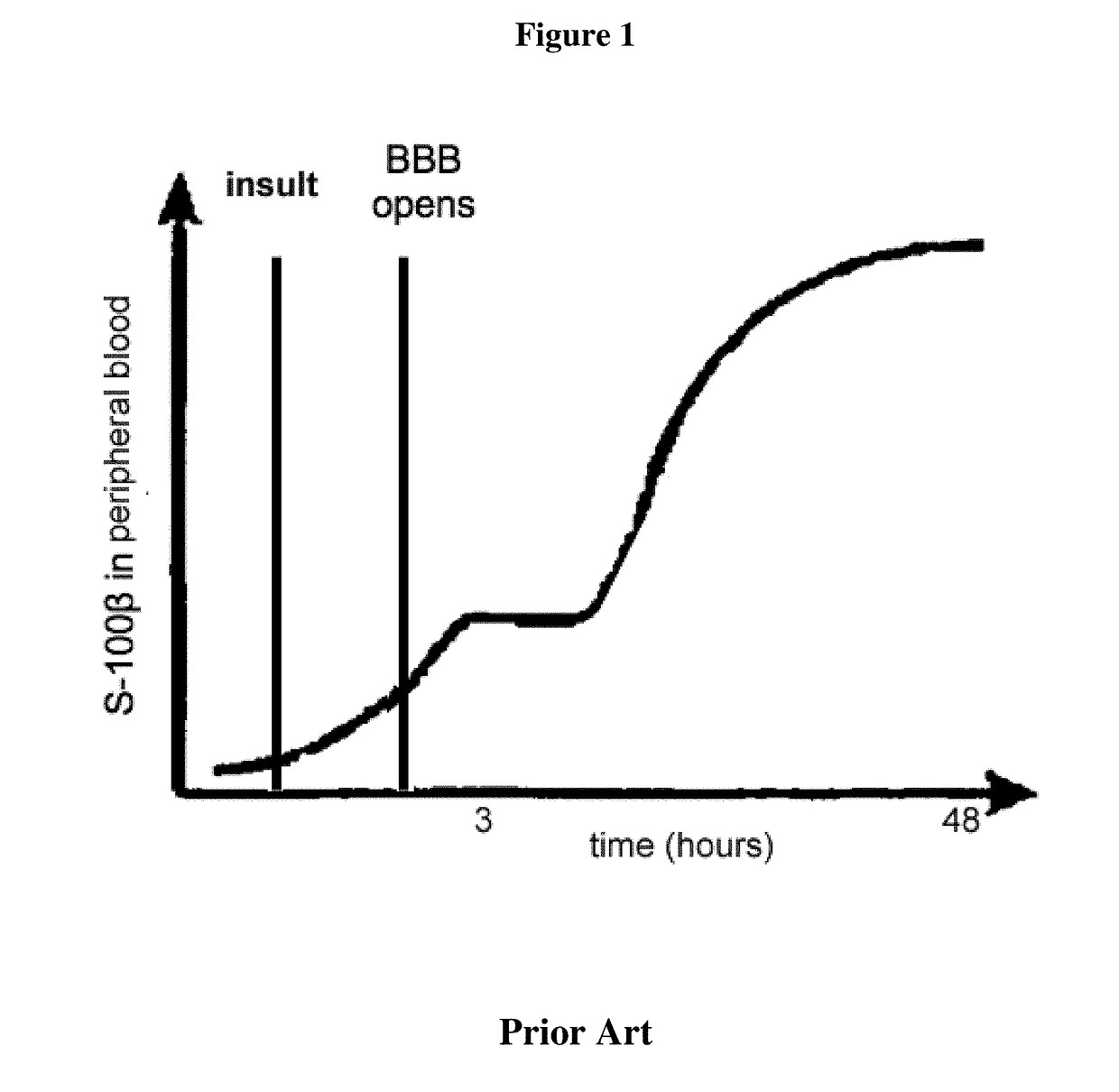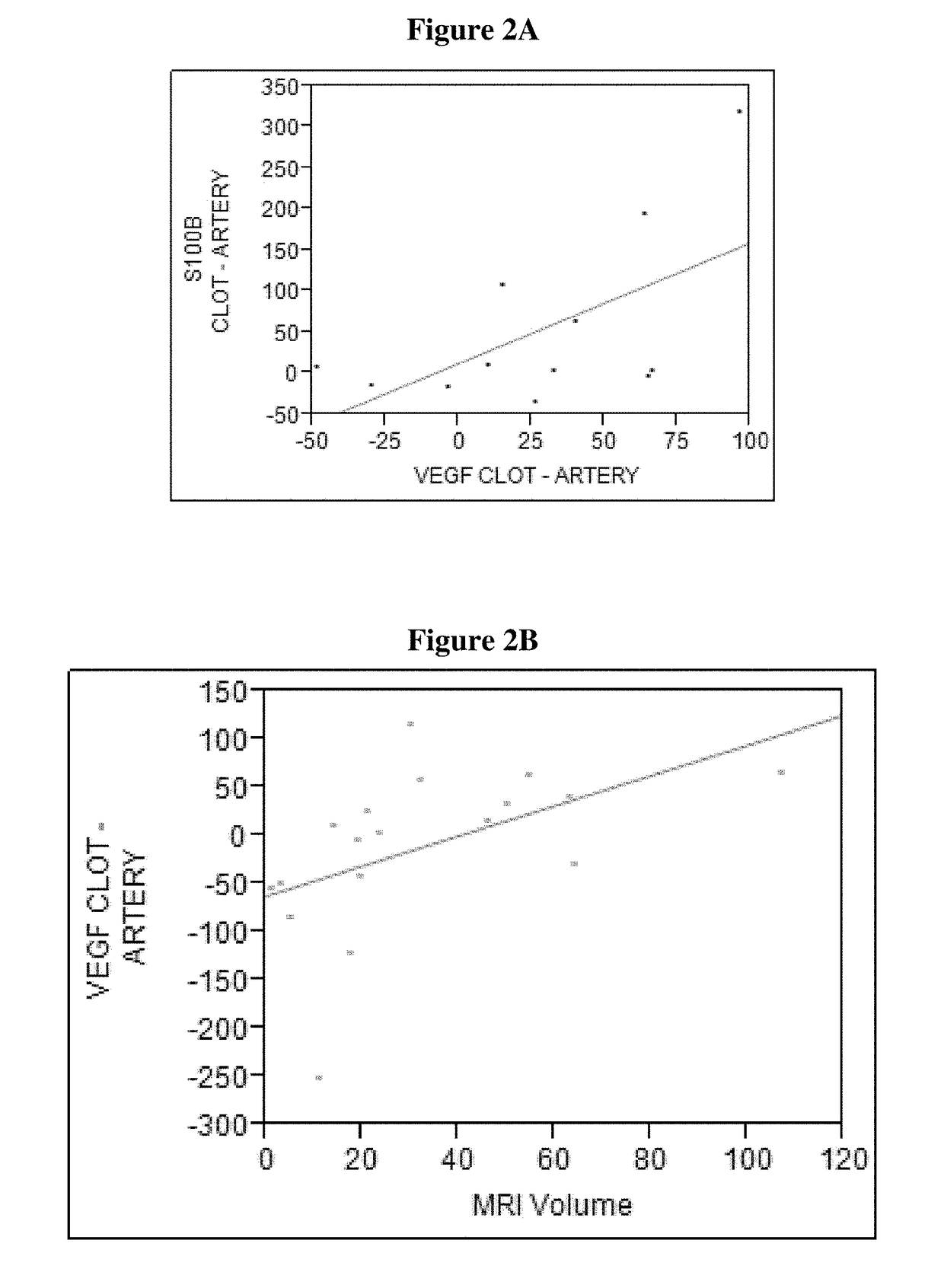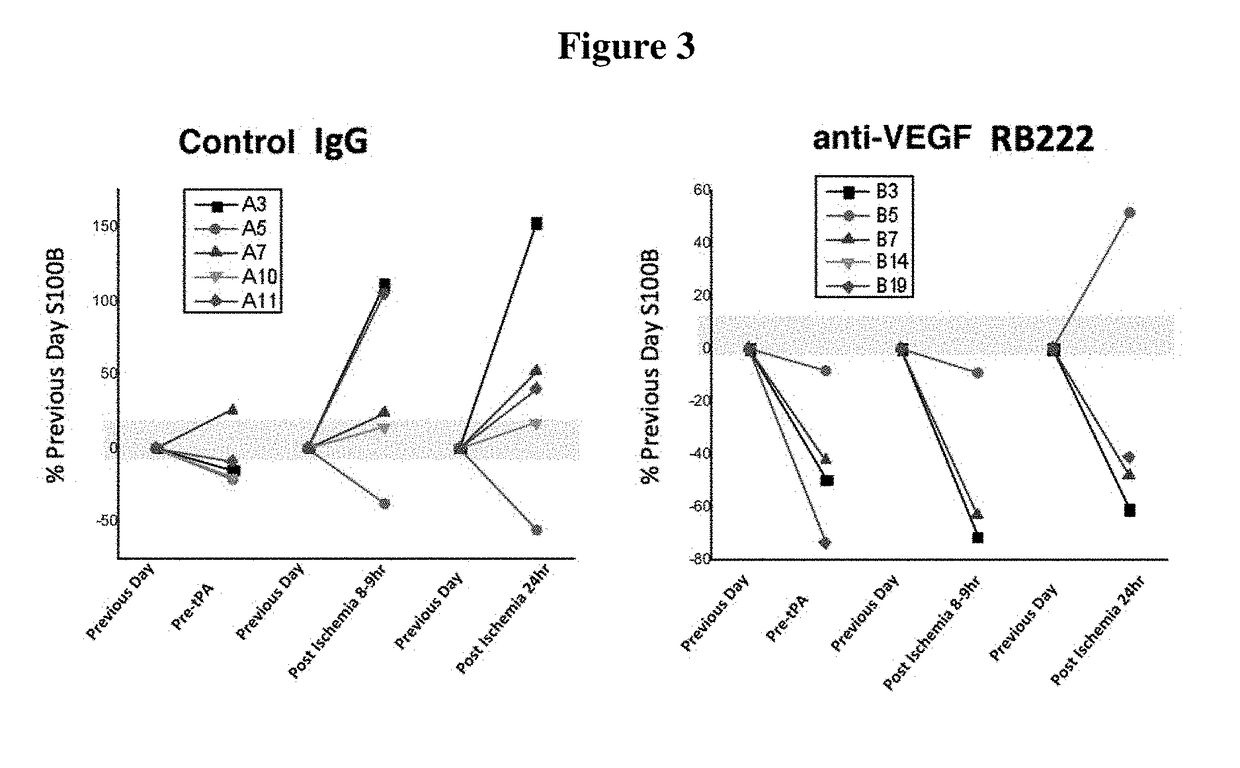Diagnostic marker for treatment of cerebral ischemia
a technology of cerebral ischemia and diagnostic marker, which is applied in the direction of antibody medical ingredients, instruments, peptides/protein ingredients, etc., can solve the problems of difficult to determine the time of cerebral infarction onset, the risk factor for hemorrhage, and the presence of disrupted bbb in a subject with embolic stroke, so as to improve the prognostic value of assessmen
- Summary
- Abstract
- Description
- Claims
- Application Information
AI Technical Summary
Benefits of technology
Problems solved by technology
Method used
Image
Examples
example 1
Assay to Evaluate Combined Administration of tPA and Anti-VEGF Antibody as a Function of Treatment Window
[0042]A cerebral infarction rat model is disclosed in the above-referenced WO2011 / 013668. Briefly, a thrombus is formed by coagulating autologous blood from rats and thrombin as a gel in a polyethylene tube catheter. This is allowed to stand overnight and cut to have a length of 1 mm. The thrombus is injected from the external carotid artery into the middle cerebral artery of the rat model under anesthesia with halothane. Cerebral blood flow is measured before and 30 minutes or 24 hours after injection of the thrombus. Animals exhibiting a cerebral blood flow lower than 50% of that measured before injection of the thrombus are used as models in the experiments.
[0043]After injection of the thrombus, BBB status is assessed by comparing the serum S-100B level as a function of time as compared to the S-100B level measured prior to injection of the thrombus.
[0044]The rats were divided...
example 2
Measurement of VEGF and S-100B in Human Stroke Thrombus Samples
[0054]Currently, tissue-plasminogen activator (tPA) is the only drug used to dissolve intra-arterial clots, helping to restore cerebral blood flow. Other interventional strategies include the use of tools that mechanically disrupt and remove intra-arterial clots. A total of 30 patients were enrolled, 15 of whom were classified as hemorrhagic by clinical criteria including time since stroke onset, age, stroke severity, and by radiographic evaluation using CT and MRI and thus selected for endovascular recanalization procedure. The 18 L microcatheter MERCI® clot retrieval system was advanced over a 0.014″ microwire to the thrombus. The microwire was removed and the MERCI® retrieval device advanced to the thrombus and deployed. The clot was then extracted as a part of routine clinical care. During extraction, approximately 20 mL of blood was aspirated. The extracted thrombus and aspirate are normally discarded, but were in t...
PUM
| Property | Measurement | Unit |
|---|---|---|
| concentration | aaaaa | aaaaa |
| length | aaaaa | aaaaa |
| time | aaaaa | aaaaa |
Abstract
Description
Claims
Application Information
 Login to View More
Login to View More - R&D
- Intellectual Property
- Life Sciences
- Materials
- Tech Scout
- Unparalleled Data Quality
- Higher Quality Content
- 60% Fewer Hallucinations
Browse by: Latest US Patents, China's latest patents, Technical Efficacy Thesaurus, Application Domain, Technology Topic, Popular Technical Reports.
© 2025 PatSnap. All rights reserved.Legal|Privacy policy|Modern Slavery Act Transparency Statement|Sitemap|About US| Contact US: help@patsnap.com



